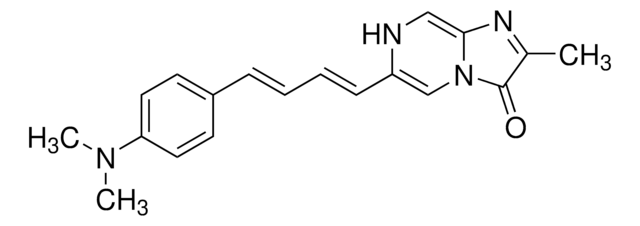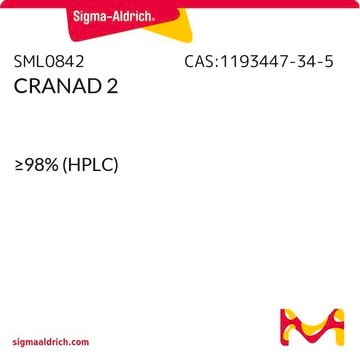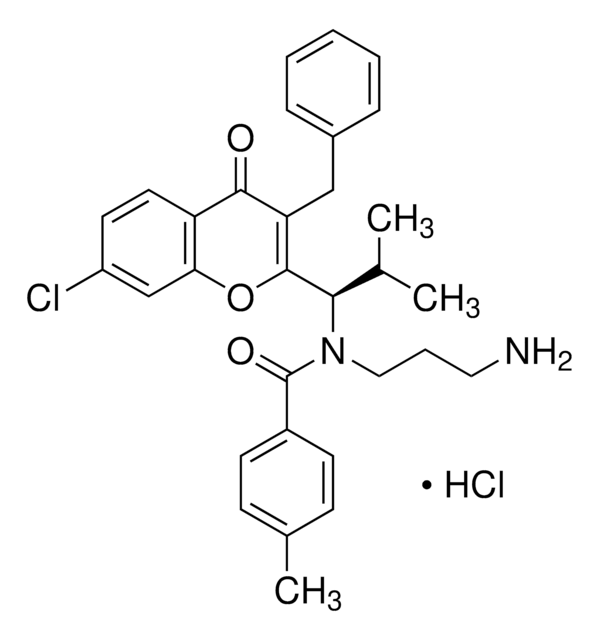推荐产品
品質等級
化驗
≥98% (HPLC)
形狀
powder
儲存條件
desiccated
顏色
gray to black
溶解度
DMSO: 2 mg/mL, clear (warmed)
儲存溫度
2-8°C
SMILES 字串
FB(O1)(F)O=C(/C=C/C2=CN=C(N(CC)CC)C=C2)C=C1/C=C/C3=CC=C(N(CC)CC)N=C3
生化/生理作用
CRANAD-3, a curcumin analog, is a brain barrier penetrant smart NIRF (near-infrared) probe for both soluble and insoluble Aβ (amyloid beta) species in vivo. CRANAD-3 could be used to monitor the decrease in Aβs after drug treatment in transgenic AD (APP/PS1) mice. CRANAD-3 is suitable for in vivo dually-amplify signal via chemiluminescence resonance energy transfer (DAS-CRET) with ADLumin-1 a brain blood barrier penetrant smart chemiluminescence probe for Aβs
儲存類別代碼
11 - Combustible Solids
水污染物質分類(WGK)
WGK 3
閃點(°F)
Not applicable
閃點(°C)
Not applicable
Congping Chen et al.
ACS chemical neuroscience, 9(12), 3128-3136 (2018-08-02)
Abnormal deposition of brain amyloid is a major hallmark of Alzheimer's disease (AD). The toxic extracellular amyloid plaques originating from the aberrant aggregation of beta-amyloid (Aβ) protein are considered to be the major cause of clinical deficits such as memory
Xueli Zhang et al.
Proceedings of the National Academy of Sciences of the United States of America, 112(31), 9734-9739 (2015-07-23)
Near-infrared fluorescence (NIRF) molecular imaging has been widely applied to monitoring therapy of cancer and other diseases in preclinical studies; however, this technology has not been applied successfully to monitoring therapy for Alzheimer's disease (AD). Although several NIRF probes for
Jing Yang et al.
Nature communications, 11(1), 4052-4052 (2020-08-15)
Turn-on fluorescence imaging is routinely studied; however, turn-on chemiluminescence has been rarely explored for in vivo imaging. Herein, we report the design and validation of chemiluminescence probe ADLumin-1 as a turn-on probe for amyloid beta (Aβ) species. Two-photon imaging indicates
我们的科学家团队拥有各种研究领域经验,包括生命科学、材料科学、化学合成、色谱、分析及许多其他领域.
联系技术服务部门








